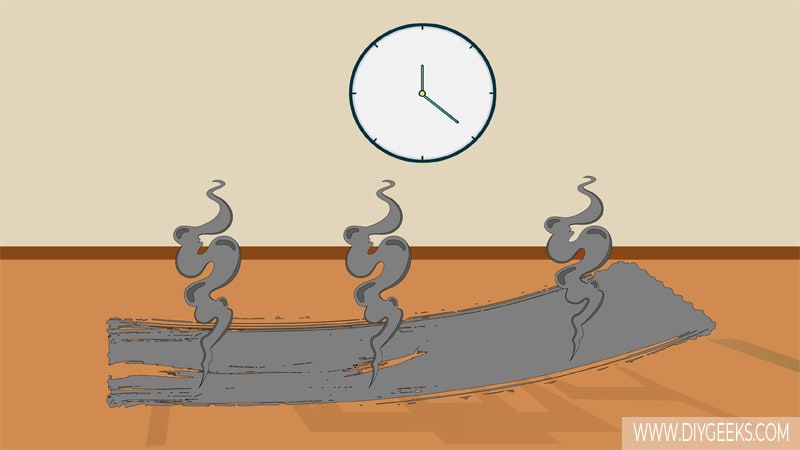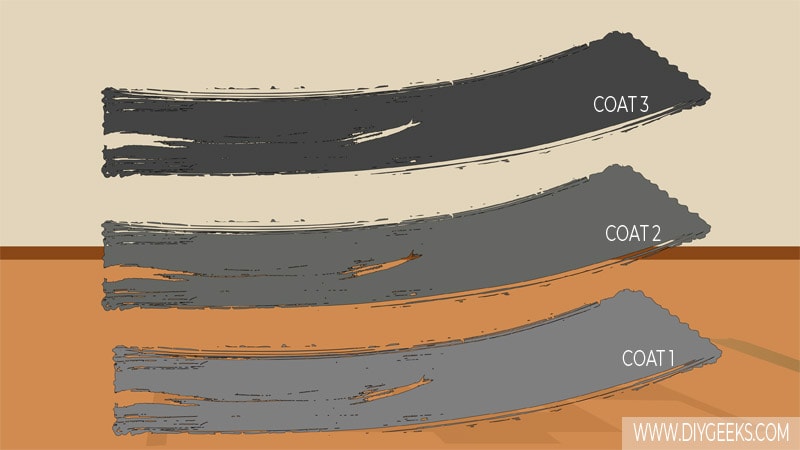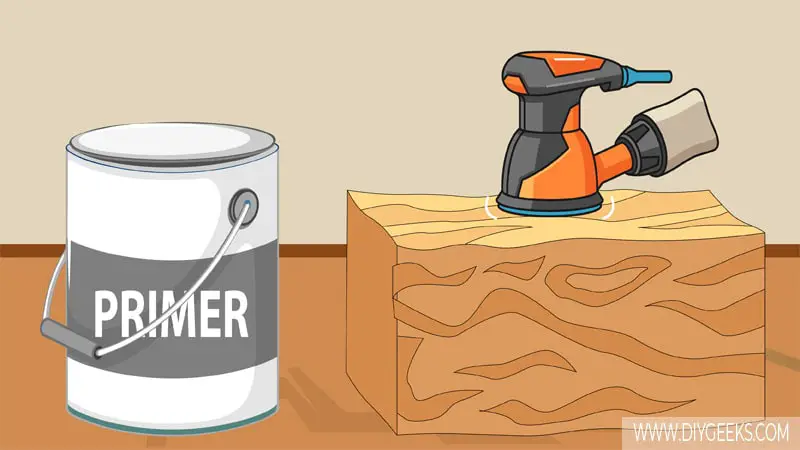You need to sand between oil-based primer coats as it dries slower and tends to accumulate dust and dirt while drying. Sanding will remove the dust and dirt so the next coating sticks better.
You don’t need to sand between water-based coats as it doesn’t accumulate dust and has a more texture finish.
However, sanding with fine-grit sandpaper is recommended if you want to improve the adhesion to the maximum.
How Long Must Primer Dry Before Sanding?

Water-based primers must dry less than 1 hour (30-40 minutes) before sanding between coats, and oil-based primers must dry 1 hour (60 minutes) before sanding. This gives its coating enough time to harden and dry to handle the sandpaper.
The exact dry time of primer depends on the type (oil or water-based), coat thickness, room temperature, and humidity levels.
The coating will wear out or get removed if you sand it too soon, as it won’t be strong enough to handle the abrasive side of the sandpaper.
Primer dries through evaporation, just like paint. Its solvent (water or oil) must evaporate from the coating so it gets dry and hard.
To know if the primer is dry enough for sanding, test it with fine-grit sandpaper. The coating is dry enough for sanding if the sandpaper moves freely. If the sandpaper doesn’t move freely and gets clogged, the coating is still wet and you shouldn’t sand it yet.
Do You Need To Sand Between Primer Coatings?

You need to sand between oil-based primer coatings as they have a slow dry time and tend to attract dust while drying. If you don’t sand between coats, the dust or debris will prevent the new coating from sticking or will form imperfections on the finish.
While the primer coating is drying, dust and debris will fall and stick over its wet coating. Removing the dust or debris with a clean rag (or water) after the coating has dried is hard, so you must sand them off.
Sanding will remove the dust from the coating that can prevent new coatings from adhering. To sand between coats of primer, use fine-grit sandpaper only. Don’t use medium or coarse-grit sandpaper as it can remove the entire coating.
You don’t need to sand between coats of water-based primer as it dries fast, doesn’t attract as much dust, and has a textured finish. Optionally, you can wipe off the coating with a clean rag after it dries.
Related Read: Oil-Based Primer vs. Water-Based Primer
Do You Need To Sand The Final Primer Coating?
You don’t need to sand the final primer coating, but sanding it will improve the paint adhesion more. The last coating must be textured enough to help the paint or sealer stick over it strongly. Since primer already has a textured finish, sanding its final coating is optional.
Sanding the final primer coating is recommended for slick surfaces as it helps with paint adhesion. Sanding creates tiny holes (pores) in the coating that the paint can penetrate or soak into. The more paint penetrates the primer coating, the better the adhesion will be, and the more the finish will last.
Sanding is necessary only if the coating is riddled with imperfections, holes, cracks, or dirt and dust.
In summary, the paint will stick over a primer coating regardless if you sand the final coating or not — but sanding will improve the adhesion even more.
Do You Need To Sand Before Applying Primer?

You don’t need to sand before applying primer if the surface doesn’t have imperfections, holes, cracks, or a sealed finish. Primer is formulated with extra adhesive additives that help it stick over all surfaces without sanding.
You must sand before applying a primer if the surface is sealed with a waterproof sealer, is uneven, and has imperfections, cracks, or holes. Sanding will remove the waterproof sealer and the imperfections from the material, flat (even out) the surface, and leave a smooth surface for primer to stick to.
If you don’t sand before applying primer over a sealed surface, the sealer will prevent it from sticking and the finish will peel off.
What Sandpaper Grits To Use To Sand Primer?
Before applying primer, sand the surface with coarse-grit (40-grit) or medium-grit sandpaper (80-100-grit). Coarse or medium-grit sandpaper will remove bumps, imperfections, and existing finishes from the surface.
To sand between coats of primer, use fine-grit sandpaper (120-220-grit) only. To sand the final primer coating, use extra-fine-grit sandpaper (440-grit). Extra-fine-grit sandpaper will only smooth the surface and not remove the coating.


